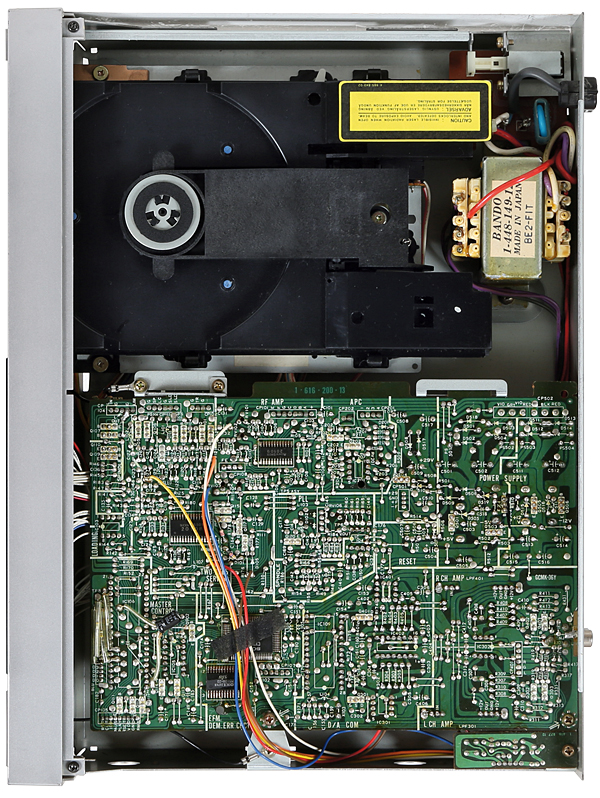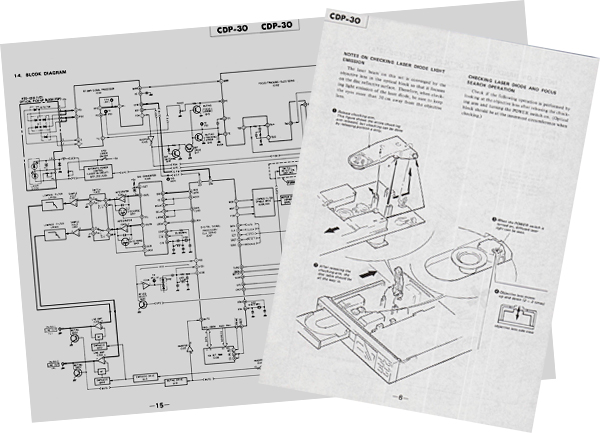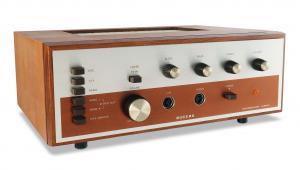Ferguson CD 03 CD player Page 2
![]() Tim Listens
Tim Listens
Being able to compare the sound of the Sony CDP-101, Ferguson CD 01 and the CD 03 revealed a general improvement as the models progressed. This is in marked contrast to Philips, who – to these ears at least – peaked early with its original 14-bit machines. Sony's work seems not to have centred on the fundamental tonality of the player, which stays substantially constant over the models, but on the 'structure' of the sound and stereo imaging.

While some of the CDP-101's distinctive stark character is now absent, the CD 03 still possesses a hard, slightly cold sound with a pronounced midband and a tight, dry bottom end. It isn't unpleasant, but means the player needs to be partnered carefully to give the most pleasing results.
One area in which these early linear (eg, no digital filter) players have a real advantage is in treble clarity. Philips machines with their 4x oversampling can sound a bit cloudy and diffuse at times when compared to the pin-sharp focus that the simpler Japanese approach can deliver. Sadly, the single DAC approach also seems to muddle up the exact positioning of instruments and performers in the soundstage, although the CD 03 shows a progressive improvement over its predecessors in this respect.

As an example, the gentle cymbal line that opens 'Space Dog' by Tori Amos [Under The Pink; East West 7567-82567-2]sounds delicious on the CD 03, although the chunky bass line that follows could do with a little more heft and body. With simple, close-mic'd pieces like this the limited spatial resolution of the DAC isn't a major limitation and one can imagine that with a forgiving amp and speakers this simple, back-to-basics approach could bear fruit.
In practice, the CD 03's soundfield tends to pool around each loudspeaker, with instruments and voices that have been placed or belong centrally in the mix being slightly smeared across something of a gap in the middle. The effect becomes less pronounced in the lower registers but, to my ears, is more obvious in the mid and high treble areas.
It is with large scale orchestral pieces where one notices this the most, since the spread of sound is naturally large and one instinctively knows where each instrument should appear. The prelude to Act III of Wagner's Lohengrin [Deutsche Grammophon 453 485-2] sounded as if the string section had been pushed firmly to the left and the brass exiled to the extreme right, with only an occasional mighty cymbal crash making it to centre stage.

Silver Machine
In fairness, you need a large, well set up listening space for these issues to become readily apparent, and it is unlikely the makers of any of the machines in this series expected them to be used in this way. Still, it serves to underline the superiority of the competing upsampling digital filter and twin DAC arrangement, with its improved phase linearity, which would become universal by the end of the decade.
Chances are that the young and trendy owners of new CD 03s would have been enjoying the immaculately produced studio pop of the time rather than ploughing through classical set pieces. Here the machine makes perfect sense, a spin through Level 42's 1985 album World Machine [Polydor 827 487-2] revealing all the sheen and sparkle that was this generation of players' calling card. Effortlessly brisk and brightly lit everywhere it matters, the CD 03 makes it clear what the digital future then had to offer.
True, one could argue that the bass is perhaps a little clipped, but the treble 'bite' is superb, making me want to listen to the entire album non-stop. In a way this player is like a little silver time machine, winding the clock back three-and-a-half decades and reminding anyone listening how these classic albums were meant to sound. This is what great vintage hi-fi is all about and in this respect the CD 03 delivers.

Buying Secondhand
The Ferguson CD 03 isn't an easy player to find these days, though the CDP-30 and Aiwa DX-770 crop up from time to time. The following observations apply to all models based on this one design. As ever, the condition of the optical unit is critical, but oddly the chances of finding a good one are favourable, the passage of time having weeded out most of the weak ones by now. A brisk reading of the disc's TOC is a good sign; spinning away for ages and doing nothing are not.
It is more likely that you will find players in which the loading gears that drive the tray have failed. In the interests of quiet running the first one in the train was made from resilient plastic and in some cases this is now beginning to decompose. A banging, rattling sound as the tray opens and closes is a sure sign that the gear is beginning to lose its teeth and it cannot be repaired.
While a skilled modeller should be able to replicate the parts with little difficulty (as was necessary with our sample) replacements are not currently available commercially.
Electronically, the cool-running circuit has proved reliable, although the quality of the soldering could in some cases be better. Therefore, all manner of intermittent and otherwise baffling faults can often be cured with a careful run around with a hot soldering iron.
Hi-Fi News Verdict
Although the Ferguson CD 03 is a somewhat obscure player, the chances of finding an example of one of the models sharing its DNA is reasonably high. Not state of the art, but still considered and well designed, this is a great machine for anyone looking for that authentic 1980s sound. It has all the style you'd expect from the 'Designer Decade' too, so if you want to spend a little time back there, find one of these.
























































